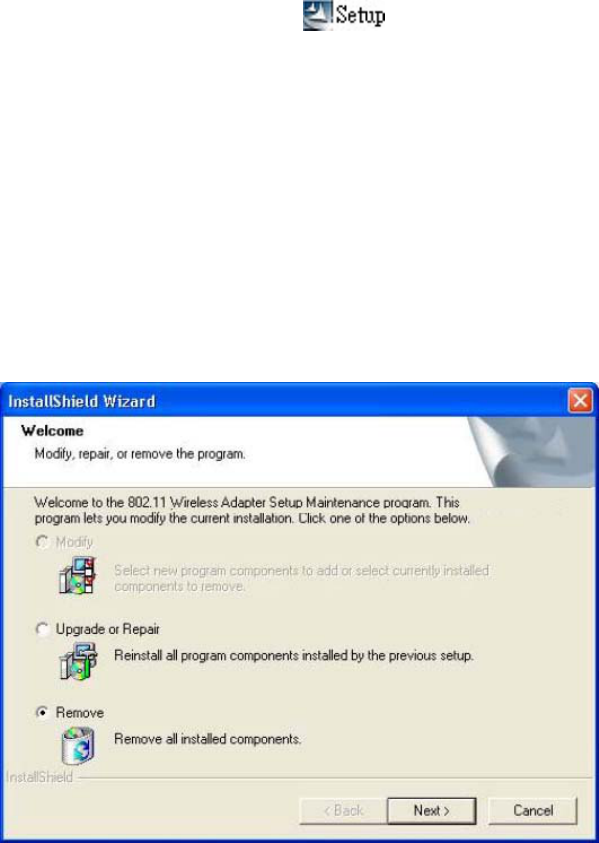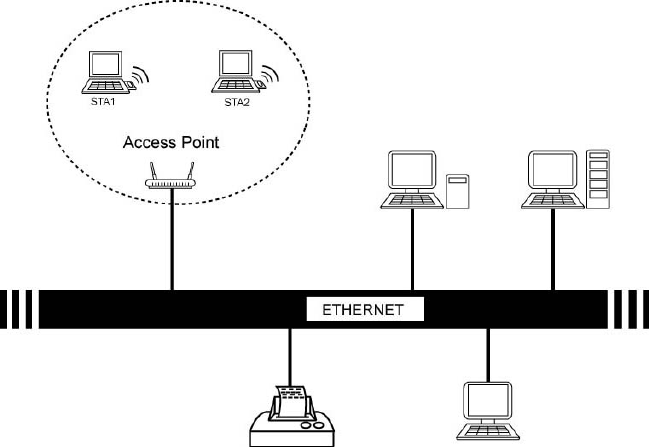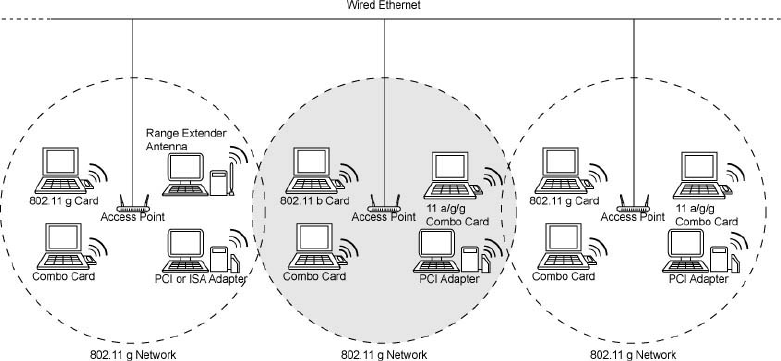HON HAI PRECISION IND T07AW WIRELESS ROUTER FOR ADSL User Manual 584804
HON HAI Precision Ind. Co., Ltd. WIRELESS ROUTER FOR ADSL 584804
Contents
- 1. USERS MANUAL
- 2. Users Manual
USERS MANUAL

i
W
Wi
ir
re
el
le
es
ss
s
R
Ro
ou
ut
te
er
r
F
Fo
or
r
A
AD
DS
SL
L
T
T0
07
7L
L0
02
22
2(
(T
T0
07
7A
AW
W)
)
F
Fo
or
r
A
AL
LC
CA
AT
TE
EL
L
U
Us
se
er
r’
’s
s
M
Ma
an
nu
ua
al
l

ii
Table of Contents
1. Introduction of Wireless Router For ADSL ........................................................1
1.1 Introducing the Wireless Router For ADSL.................................................1
1.2 System Requirements.......................................................................................1
1.3 IEEE 802.11 Specifications..............................................................................1
1.4 Security Standards ...........................................................................................2
2. Installation ............................................................................................................3
2.1 Compliance .........................................................................................................3
2.2 Windows ME/ 98 SE Installation CD Requirement .......................................3
2.3 Installation..........................................................................................................4
2.4 Uninstall the Wireless Router For ADSL ........................................................4
3. Wireless Topologies...............................................................................................5
3.1 Peer-to-Peer Group............................................................................................5
3.2 Access Point Infrastructure ..............................................................................5
4. Specifications ........................................................................................................9
5. FCC Notices…………………………………………………………………….10

1
1. Introduction of Wireless Router For ADSL
1.1 Introducing the Wireless Router For ADSL
Wireless Router For ADSL is a high performance wireless LAN access point
that complies with the IEEE 802.11b and 802.11g wireless standards, which can
be used to provide mobile clients with wireless access to an Ethernet network.
The Wireless Router For ADSL supports Windows XP, Windows 2000,
Windows Millennium Edition (ME), and Windows 98.
A wireless LAN provides the same functionality of a wired network, but it
eliminates the need to install networking cables and other networking equipment.
A wireless LAN is not only easier to deploy, but it also allows for mobility
through “roaming.” For example, the Wireless Router For ADSL can roam from a
conference room to an office without being disconnected from the network.
*Available features vary by region/country.
1.2 System Requirements
PC with the Operating Systems as follows: Windows XP, Windows 2000,
Windows Millennium Edition (ME), or Windows 98 Second Edition
1.3 IEEE 802.11 Specifications
The Institute of Electrical and Electronics Engineers (IEEE) adopted the 802.11
standard for wireless devices operating in the 2.4 GHz frequency band in 1997.
This standard includes provisions for three radio technologies: direct sequence
spread spectrum, frequency hopping spread spectrum, and infrared. Devices that
comply with the 802.11 standard operate at a data rate of either 1 or 2 Mbps.
1.3.1 802.11b
In 1999, the IEEE modified the 802.11 standard to support direct sequence
devices that can operate at speeds of up to 11 Mbps. The IEEE ratified this
standard as 802.11b. 802.11b devices are backwards compatible with 2.4 GHz
802.11 direct sequence devices (that operates at 1 or 2 Mbps).
1.3.2 802.11a
Also in 1999, the IEEE modified the 802.11 standard to support devices operating
in the 5 GHz frequency band. This standard is referred to as 802.11a. 802.11a
devices are not backward compatible with 2.4 GHz 802.11 or 802.11b devices.
802.11a radios use a radio technology called Orthogonal Frequency Division
Multiplexing (OFDM) to achieve data rates of up to 54 Mbps.
1.3.3 802.11g
In 2003, the IEEE ratified the 802.11g standard. This standard delivers the same
54Mbps maximum data rate as 802.11a, yet it offers an additional and compelling
advantage-backward compatibility with 802.11b equipment. This means that

2
802.11b client cards will work with 802.11g access points, and 802.11g client
cards will work with 802.11b access points. Note that 802.11b products cannot be
upgraded to support 802.11g since the 802.11g radios use a different chipset than
802.11b devices. However, 802.11g products and 802.11b products can work in
the same network. Because 802.11g and 802.11b operate in the same unlicensed
band, the two standards share the same three channels, which can limit wireless
capacity and scalability.
An 802.11a device and an 11b/g device cannot communicate with each other.
The Wi-Fi standard certified at 2.4 GHz ensures the wireless interoperability with
other Wi-Fi (802.11b) certified devices.
1.4 Security Standards
The Wireless Router For ADSL supports the following security standards
(features vary based on models):
• Cisco Client Extension compatibility (including LEAP)
• Wired Equivalent Privacy (WEP) encryption using 64 bit, 128 bit or 152 bit
encryption
• AES-CCM Encryption support
• Support for Windows 802.1x supplicants
• Wi-Fi Protected Access (WPA) encryption using PassPhrase (text string with
at least 8 to 63 characters, it can be any combination of letters, numbers and
other characters).

3
2. Installation
This chapter describes how to install a Wireless Router For ADSL and software in
a computer running Windows XP, Windows 2000, Windows Millennium Edition
(ME), or Windows 98 Second Edition (SE).
Note for Windows XP Users:
The Windows XP operating system has a built-in feature known as “Wireless Zero
Configuration” which has the capability to configure and control the Wireless
Router For ADSL.
2.1 Compliance
Review the following notes before installing a Wireless Router For ADSL. The
Wireless Router For ADSL must comply with the following EMI, safety and ESD
requirements:
1. Emission
802.11g
• North America FCC Part 15b, Part 15c
• Europe EN 301 893
• Japan TELEC STD –33, STD- 66
2. Safety Requirements
• North America UL 60950 Ver.3 for USA, CSA C22.2 for Canada
• Europe EN 60950
3. ESD Requirement
Wireless Router For ADSL must withstand 15KV test voltage of electrostatic
discharge under operational conditions.
2.2 Windows ME/ 98 SE Installation CD Requirement
Before beginning the installation of a Wireless Router For ADSL, ensure that
you have a Windows 98 SE or Windows ME installation CD available (depending
on the computer’s operating system). Windows 98/ME users may be prompted to
insert a Windows CD during the installation. You should not need a Windows CD
when installing the card in a Windows XP or Windows 2000 computer.
If you do not have a Windows 98/ME CD, it is possible that you already have
the Windows installation files on your hard drive. These Windows installation
files are known as Windows Cabinet or CAB files. The Cabinet files are
commonly located in
C:\WINDOWS\OPTIONS\INSTALL\ or C:\WINDOWS\OPTIONS\CABS\.
Windows 98/ME users may need the Windows CD or Cabinet files to
complete the installation of a Wireless Router For ADSL. It is recommended
that you do not proceed with the installation until you have confirmed that
you have one of these Windows installation media available.

4
2.3 Installation
Install the driver before you insert the Wireless Router For ADSL into your
computer. Install the driver for the Wireless Router For ADSL as the following
step-by-step description.
1. Double-click InstallShield Wizard icon in the installation CD-ROM to
start installing the driver.
2. Follow the instructions in the InstallShield Wizard to complete the installation.
3. If you are asked to restart your computer, ensure to save your files before
restarting.
4. Insert Wireless Router For ADSL into your computer.
5. Enjoy surfing the Internet.
2.4 Uninstall the Wireless Router For ADSL
Following procedures show how to uninstall Wireless Router For ADSL.
1. Go through the path described as follows to enter Add/Remove Programs:
Start menu>Control Panel>Add/Remove Programs
2. When you see the following window, click Remove and then click Next> to
start uninstall.
3. Follow the instructions in the InstallShield Wizard window to uninstall
Wireless Router For ADSL.

5
3. Wireless Topologies
Wireless Router For ADSL looks and operates similar to Ethernet products. The
only difference is that a radio replaces the wire between communicating devices.
This means that all of your existing applications that operate over Ethernet will
work with the Wireless Router For ADSL without any special wireless
networking software.
A wireless LAN can be configured for two different modes of operation. While
each method has its advantages, one of them may be better suited for your needs.
Review the following configurations to determine which mode is best for you.
3.1 Peer-to-Peer Group
A Peer-to-Peer group—also known as an Ad-Hoc network-- is the simplest to
deploy and is ideal for small offices. Peer-to-Peer Group can be comprised of two
or more wireless client configured to communicate with one another. Peer-to-Peer
Group clients communicate directly with each other without using an access point
(AP). As a user on this type of network, you are able to quickly build up a
wireless network in order to share files with other employees, print to a shared
office printer, and access the Internet through a single shared connection.
Ad-hoc networking is cost effective, because no other devices components are
needed (such as access points, hubs or routers) in order to setup a network.
However, with Ad-Hoc networking, your computer is only able to communicate
with other nearby wireless clients.
By using the off-the-shelf peer-to-peer network operating systems, each
computer can dynamically connect and reconnect to the others with no additional
configuration, as illustrated in Figure 1.
Figure 1 Peer-to-Peer Group
The Wireless Router For ADSL can communicate with an 802.11b or 802.11g
Peer-to-Peer Group (but it can not dynamically switch between the two).
Therefore, you must manually configure the wireless adapter to use one specific
radio mode.
3.2 Access Point Infrastructure
Many companies have an existing Ethernet or wired LAN infrastructure and
want to be able to extend that capability to wireless nodes. This is accomplished

6
by installing one or more Access Points on the Ethernet network. Access Points
are devices that communicate with both the Ethernet network and the wireless
network.
An Access Point network is also referred to as an Infrastructure network.
The key difference between an Infrastructure network and an Ad-Hoc network is
the addition of one extra element—the Access Point. The Access Point serves as
the focal point for all data traffic on your wireless network, optimally managing
all wireless data transactions.
Additionally, the wireless Infrastructure can provide access to an existing
wired LAN. This link allows computers on the wireless LAN to access the other
wired LAN’s resources and tools, including Internet access, email delivery, file
transfer, and printer sharing. See Figure 2 for example.
Figure 2 Access Point Network
You can use the Wireless Router For ADSL to communicate with 802.11g Access
Points, 802.11b Access Points, or a combination of Access Point types. The
wireless adapter is compatible with 802.11g and 802.11b Access Points from any
vendor.
3.2.1 Roaming Among Multiple APs
For larger environments, the Wireless Router For ADSL may roam from one
Access Point to another while maintaining the same network connection. The
Access Points establish coverage areas or cells similar in concept to those of a
cellular phone network. The card will connect to any Access Point that is within
range.
The Wireless Router For ADSL supports both roaming between APs of the
same type (for example, from one 802.11b AP to another) and roaming between
APs of different types (for example, from an 802.11b AP to an 802.11g AP).
Figure 3 illustrates roaming between APs of different radio types:

7
Figure 3 Roaming Between APs of Different Radio Types
As the mobile client seamlessly switches from cell to cell, its network
connectivity is preserved. The user can move freely between the Access Points in
the network. When the roaming client leaves the transmission range of one Access
Point, the card automatically detects the other Access Point(s) in the same vicinity
to continue the network connection.
3.2.2 Roaming Principles
A Wireless Router For ADSL can roam between 802.11g Access Points and
802.11b Access Points.
All 802.11b and 802.11g Access Points that a client will roam between must
have the same Network Name. Depending on the Wireless Mode selection, a user
can roam among 802.11g and 802.11b Access Points.
All workstations with Wireless Router For ADSL installed must use either a
Network Name of “any” or the same Network Name as the Access Points that
they will roam between.
All Access Points and Wireless Router For ADSL must have the same security
settings to communicate.
The Access Points’ cells must overlap to ensure that there are no gaps in
coverage and to ensure that the roaming client will always have a connection
available.
Access Points installed in the same vicinity that use the same frequency band
(2.4 GHz) should each use a unique, independent Channel to avoid potential
interference.
Access Points that use the same Channel should be installed as far away from
each other as possible to reduce potential interference.
i. Range
Every environment is unique with different obstacles, barriers, materials, etc.,
and, therefore, it is difficult to determine the exact range that will be achieved
without testing. Radio signals may reflect off of some obstacles or be absorbed by
others depending on their construction.
The IEEE 802.11 standards support multiple data rates that correspond to
different transmission techniques. For wireless devices, there is a trade-off
8
between range and data rate. Transmission techniques that provide high data rates
operate over short distances; techniques that provide slower data rates operate
over greater distances. By default, the Wireless Router For ADSL automatically
switches between these data rates to maintain a usable radio connection and
achieve the best data rate based on the card’s distance from the Access Point.
Therefore, a client that is close to an Access Point will operate at a higher data
rate than a client that is farther away from the Access Point.
The Wireless Router For ADSL includes one integral omni-directional
antenna. Proper antenna placement can help improve range. Here are some
guidelines:
- Try to keep the AP’s antennas free of obstructions (particularly metal
objects).
- Use the Wireless Client Utility to evaluate the signal strength and link
quality between 802.11 devices.
Refer to the documentation that came with your Access Points for suggestions on
how to locate the AP and its antennas to maximize range and performance.

9
4. Specifications
The following technical specification is for reference purposes only. Actual
product’s performance and compliance with local telecommunications regulations
may vary from country to country. Wireless Corporation will only ship products
that are type approved in the destination country.
Network Information
Media Access Protocol IEEE 802.11b DSSS
IEEE 802.11g OFDM
Media Access Protocol CSMA/CA with ACK
Encryption 64/128 -bit WEP encryption
Radio Specification
Data Rate Supported 802.11b: 11Mbps with fall back rates of 5.5,
2,1Mbps
802.11g: 54Mbps with fall back rates of 54, 48,
36,24, 18, 12, 9 and 6Mbps.
Modulation Schemes 802.11b: DQPSK, DBPSK, CCK
802.11g: OFDM
Frequency Band 2.4 GHz frequency band; actual frequencies
may vary
Data rates 1 Mbps~54Mbps
Operating Frequency 2400 ~ 2497MHz ISM band
Modulation 802.11g: OFDM
802.11b: CCK (11Mbps, 5.5Mbps)
DQPSK (2Mbps, 1Mbps)
Receiver Sensitivity 54Mbps at 10% PER: –65dBm
11Mbps at 8% PER: –80dBm
Environmental Restrictions
Operating Temperature 0 to +55
Non-Operating Temperature -10 to 70
Operating Humidity 10% ~ 90% non-condensing
Non-Operating Humidity 5%~ 95% non-condensing
Physical Features
Form Factor 32-bit Card Bus
PCB 4-layer design
WLAN Broadcom 4306 solution
Baseband Processor/MAC BCM4306
Radio chip BCM2050
Antenna External dual diversity antennas and Internal
dual diversity antennas
Power Consumption
Operating Voltage 3.3 VDC
Transmitter Output Power Typically 15dBm at 54Mbps
Typically 17dBm at 11Mbps
Current Consumption Typical transmit mode: 500mA
Typical receive mode: 330mA
10
5. FCC Notice
This device complies with part 15 of the FCC Rules. Operation is subject to the
following two conditions: (1) This device may not cause harmful interference, and (2)
this device must accept any interference received, including interference that may
cause undesired operation.
Federal Communication Commission Interference Statement
This equipment has been tested and found to comply with the limits for a Class B
digital device, pursuant to Part 15 of the FCC Rules. These limits are designed to
provide reasonable protection against harmful interference in a residential installation.
This equipment generates, uses and can radiate radio frequency energy and, if not
installed and used in accordance with the instructions, may cause harmful interference
to radio communications. However, there is no guarantee that interference will not
occur in a particular installation. If this equipment does cause harmful interference to
radio or television reception, which can be determined by turning the equipment off
and on, the user is encouraged to try to correct the interference by one of the
following measures:
- Reorient or relocate the receiving antenna.
- Increase the separation between the equipment and receiver.
- Connect the equipment into an outlet on a circuit different from that to which the
receiver is connected.
- Consult the dealer or an experienced radio/TV technician for help.
THE MANUFACTURER IS NOT RESPONSIBLE FOR ANY RADIO OR TV
INTERFERENCE CAUSED BY UNAUTHORIZED MODIFICATIONS TO THIS
EQUIPMENT. SUCH MODIFICATIONS COULD VOID THE USER’S
AUTHORITY TO OPERATE THE EQUIPMENT.
To comply with FCC RF exposure compliance requirements, a separation distance of
at least 20 cm must be maintained between the antenna of this device and all persons.
This transmitter must not be co-located or operating in conjunction with any other
antenna or transmitter.